#construction of statue of unity
Explore tagged Tumblr posts
Text

Statue of unity, India: World's tallest statue
#Statue of unity#india#statue#sculpture#gujarat#kevadia'#gandhi#world's tallest#Vallabhbhai Patel#construction#monument#national monument#spring temple buddha#statue of liberty#christ the redeemer#Tourism
3 notes
·
View notes
Text

ㅤㅤㅤㅤㅤㅤㅤㅤ 𝑾𝑨𝑹𝑹𝑰𝑶𝑹𝑺 𝑶𝑭 𝑻𝑯𝑬 𝑺𝑼𝑵ㅤㅤ january free requestsㅤ ㅤ trafalgar law x f! reader

🕊️ request: @leftladyluminary ⋆。˚ Hello ( ^ω^ ) I was wondering if I could request a Law x fem!reader exploring a temple together that turns out to be a uh “procreation” temple the strongly affects those who enter? Please and thank you~ (╹◡╹)♡ 🕊️ tw: mdni. raw, rough sex. vaginal. nipple play. pregnancy ideas implied. cream pie. wc: 1650 🕊️ masterlist

Zou is a humid place, very muddy as well. Your boots are dirty, and your clothing soaking wet. Those “Eruption Rains” become pretty inconvenient throughout the day, but they are necessary.
“I shouldn’t have worn a white shirt…” you tell Law, crossing your arms over your breasts.
“I would say you shouldn’t have worn it without a bra, (Name)-ya” Law says, squeezing and twisting his hat to drain it from the excess of water.
You sit down on a rock. Was it really necessary to say such thing? At best he should be a little bit happy to see your body through semi see through fabrics. What Law has just said felt painful to you, to say the least.
“You are right, I’m sorry” you mumble, walking away to find a proper place to hide and change your clothes. You are sure the ones in your backpack are as wet as your current ones, but something darker will do to cover up.
When the rivers formed in what are usually trails on top of Zuneesha’s back are finally dried, you find a very interesting construction ahead. Curious, as always, you come closer to discover it is a shrine.
“What a beautiful place” you comment in awe. Law seems to be anywhere else. He is probably near, but not close to you.
Curious, you put a step inside the shrine. It isn’t necessarily different from the rest of the temples you have attended in this long journey of piracy. However, somehow in the aura feels unusual to you.
The scent of incense smells more flowery, sweet, maybe even a little bit spicy. The Vitreaux windows create incredible depictions of Orchids on the ground, as the sun filters its rains through them. And the altar has a very distinctive little statue that calls for your hand to touch.
“I wonder what’s this shrine about? What god is meant to be built for? In fact, do Minks have gods?” you ask yourself, making mental notes to ask Wanda once you are back from your expedition.
Your eyes scan the golden sculpture, it looks like two creatures tangled into each other. You would lie if you said you didn’t think of them having sex, and in fact you giggle for your “witty” thoughts.
There isn’t much to discover besides what you have just seen, but a little sign engraved in an old piece of wood.
“you shall keep your blood flowing; the warriors of the Sun must never disappear; they will fight for freedom and unity during this dark night”
You smile; and immediately after reading you remember Luffy. Even Law recognizes he is as shiny as the Sun itself. You don’t really think much of the true meaning of the sign, and soon after find Law looking at you from the very entrance.
“I turned around and you were gone, I didn’t know where you were” he asks, still soaking wet like a cat left out in the rain and looking a little bit mad at you for disappearing.
You could have picked a fight; you probably could have just brushed it off. But neither of those were your reaction, and unconsciously you lift your arms to stretch. The white shirt, still soaking wet, kept the transparency and with that the show off of your hard nipples presented to Law in its full beauty.
“I’m sorry, I was looking for a place to change” you tell him, with a rather sexy tone.
Law’s sun burnt cheeks turn red, golden eyes widening, pupils getting bigger. The little hints of black eyeliner smudge on his already dark tinted under eyes, the juicy pale lips of your captain slowly separating.
“You thought of changing on a shrine? Getting naked on a temple, (Name)-ya?” he asks, coming closer to you as he lets his yellow bag fall on the floor. Law walks like a snow leopard, slowly, menacing, sexily…
You swallow. That’s not his usual self, not at least with you. He looks like he is about to fight you, or even hurt you.
“L-Law, I wanted to put on a shirt over this one so that my breasts won-“ you shut up, as he strikes you and pins you against the altar.
You put your arms back to get a grip of something as you lose balance. Your hand reaches something cold and tiny and immediately after, his warm inked hand falls on top of yours.
Both, at the same time, touch the little statue behind and it feels like a new energy begins to run through your veins. It doesn’t take you long to finally succumb into a lustful, inappropriate kiss. His hands, all over your waist, lift the wet shirt that’s begun to get hot and too heavy on your skin.
“I have no idea what force is making me do this, but believe me I am not mad about it, (Name)-ya” Law whispers, in between panting and with his lips grazing yours.
“I have no idea either, but don’t you dare stop…”
The Surgeon of Death attacks your lips once again, this time while freeing you completely from your wet coverings… even if, something else in you was getting wetter by the moment.
Maybe it was the force of doing something so incorrect, so unholy on a sacred place… or maybe it was your love? Or even, both? Who knows, perhaps it was something else but the more you kiss, the more your bodies slide down until your back hits the red carpet covered floor.
Law’s tattooed hands squeeze and play with your breasts, almost like a beast ready to engulf his prey. “You wanted me to do this, don’t you?” he asks, reaching for one of your hard nipples, kissing the erected surface and then trapping it with his lips.
“Honestly, yes. I missed your touch…” you moan, realizing you are finally able to indulge in sex. It’s been long enough since you could touch each other, since you could be this intimate.
“I know, I’m sorry…” he whispers, planting a soft kiss on your chest.
You know there is nothing to forgive, and immediately after you notice his stitched arm holding the weight of his body on top of you.
“Law… can I be on top this time?” you ask, kissing the scar of his biceps.
His golden eyes shine brightly, apparently he loved the question and nods energetically, even if he felt embarrassed seconds after for doing so.
Soon, you take his place, undressing him faster and straddling your hips on his lap. He is hard, and the grey underwear completely soaked let nothing to the imagination. Deliciously tempting, you feel the impulse to your use your mouth before anything else, but the need of having him inside you is stronger… something invisible is making you desire his seed would fill your womb on and on and on.
You lift your ass from his lap, just a little for your hand to pass through your moved to the side panties and his hardness.
Law gasps when he understands you are not there to waist time on any other type of pleasure that his dick deep inside you.
“Now? but I don’t- I don’t have prot-“ he stutters, fighting in between the need of fucking you rough and reproduction health matters.
“You don’t really need it, I want you raw and rough in me…” you purr, guiding his sex towards your dripping entrance.
Your labia devours his tip, engulfing it with a warm slippery sensation. Law’s neck muscles tense, his head gets thrown back, a moan escapes his lips that resonates all over the shrine.
You do the same as you let yourself fall on top of him for his shaft to be finally entirely inside you. A whine so loud that mixes with his, and it becomes never ending as you start to hump on top of him.
Your hips move up and down, back, and forth and also in circles. Law’s fingers carve marks on the side of your hips and sometimes travel to the small of your back to press you against him with divine force. His hips, who up until now where immobile as pleasure struck him harder than he could ever expected, begin to move too.
“Nggh… let me fuck you faster…” he moans, using all of his strength coming from his core to impale you harder and synchronized to the rhythm of your jumps. The sound of wet sweaty skin slapping against the other become a sacred melody all around, while your nails carve marks as you grip from his heart tattooed pecs.
It doesn’t take you longer for your climaxes to arrive, and while your fingers intertwined with Law’s, your spasming walls milk him so violently… so needy, desperate for his release…
His frown intensifies, he even bites his lower lip but his eyes never shut as his pupils only fix into yours. As if his gaze was trying to anticipate something both knew, willingly to do whatever it takes to make his seed plant on you… deep, inside, of you.
“Fill me up…” “Keep it all inside…”
ㅤㅤㅤㅤㅤㅤㅤㅤㅤㅤㅤㅤㅤ ㅤ...
“Wanda, may I ask you something?” you tap on her soft furry shoulder.
“Yes, honey. Tell me, what is it? Are you ok? You look very tired” the mink says, curious and perhaps a little worried about your state… truth Law wasn’t satisfied with just one round.
“So, I found a Shrine on the forest. It had a little statue; I didn’t get exactly what it was representing. But I remember reading a sign that said something about the warriors of the sun should prevail” you explain.
Wanda giggles. “Well, now I know why you are that tired… you went there with Trafalgar, didn’t you? it’s the procreation shrine, ruled by the sun lovers. That’s where we go to pray when we wanna bear children.. it said to be special forces that help us get pregnant”
ㅤㅤㅤㅤㅤㅤㅤㅤㅤㅤㅤㅤㅤ“Oh…”
#trafalgar law x reader#Trafalgar Law 𝘹 F! 𝘙𝘦𝘢𝘥𝘦𝘳#trafalgar law headcanons#trafalgar law x you#trafalgar law scenarios#trafalgar law#law headcanons#trafalgar law smut#law smut#law one piece#law scenarios#law x reader#trafalgar law x y/n#law x you#law x y/n#law imagine#one piece smut#one piece x reader#one piece x reader smut#heart pirates law#law#one piece x you#op smut#op x reader#op scenario#op imagines#op law#law op#one piece
2K notes
·
View notes
Text
theres more to this than i can properly express right now but theres something interesting about how "awareness" efforts interact with mental health/disability issues within a wider oppressive society. People have rightfully brought attention to the way that some disorders are now seen as less serious due to their normalization, things like depression, anxiety, adhd, etc... are often made out as quirks rather than conditions which can be disabling. To some extent, this awareness can still be helpful, and I think many would default to being in favor of it, viewing the de-emphasis of these disorders as an unfortunate byproduct. I'm not here to say that awareness is bad, but I do think we should take a look at the other side of the coin and consider what that tells us about the situation. When some disorders are accepted as normal, as acceptable to have, what does that say about those disorders that don't reach the same status? Are they brought up along side those other disorders? or are they pushed down into the depths of social taboos? I would argue in many cases its the latter. Look at how popular sentiment treats schizophrenia or NPD. These conditions are deeply dehumanizing labels which people treat in a way so vile its difficult to even describe. the terms for diagnosis themselves become synonymous with evil or bad people. If you're being rude or uninformed you're "psychotic", if you're abusing someone you're a "narcissist", similar can be seen with ASPD and how people use the term "psychopath" and "sociopath" These disorders are pushed so far away from any form of real acceptance that its hard to believe psychiatry and these awareness efforts are working to truly destigmatize mental differences and help people. Rather, what it appears to be doing is simply shifting the line. Shifting the line of whats considered acceptable, whats a normal human (dis)order, and whats an evil disorder thats exclusive to inhuman caricatures. In the process of moving the line like this, changing the boundaries for which disorders are accepted, not only does it enforce that the boundary deserves to exist, and that these set of disorders are really extra special bad™, it also loops back around to where I started this post, to issues like anxiety and depression. To become accepted in a deeply ableist society, we can't simply change what we views as acceptable behavior or disorders, we have to change the disorders themselves, reshaping them to fit into the existing accepted standard. We mold conditions into pretty little shapes to allow for their acceptance. This might sound strange in some ways, but its really nothing new. Many other social groups have long been fighting the battle between assimilation and liberation, where you either give up part of your distinctness to fit into an oppressive system, or you fight the system as a whole to fundamentally change it and who its for. What I'm saying here is that the same struggle between liberation and assimilation applies to mental health awareness and disability rights issues. We can't simply fight to have depression recognized as a "normal person disorder", that puts down people still classified as having "bad person disorder"s, and it white washes realities of depression and just how serious it can be.
We have to actually work to undo the systems that classify people as fundamentally not deserving of respect or autonomy in the first place. Its a dialectical "unity of opposites", people are pushed out of personhood for the sake of reifying those who are accepted into it - and conversely, accepting certain specific groups into the accepted class actually enforces the barrier further, legitimizing it as a real distinction, when its entirely constructed.
80 notes
·
View notes
Text


The Swastika Symbol 卍 The Buddhist swastika is called "manji" (卍) in Japanese, and it is known as "wan" (卍, 万)" in Chinese. In Sanskrit, it is referred to as "svastika" (स्वस्तिक), which means "conducive to well-being," derived from "su-" (good, auspicious) and "asti" (to be, to exist).
Meaning & Symbolism in Buddhism
In Buddhist tradition, the manji (swastika) is a sacred and auspicious symbol representing harmony, eternity, and the interconnectedness of all things. Its arms, usually turning to the left (counterclockwise, 卍) in East Asian Buddhism or to the right (clockwise, 卐) in Indian traditions, symbolize the revolving forces of Dharma and the eternal cycle of life, death, and rebirth (Samsara).
Deeper Symbolism
Cosmic Harmony – It represents the balance of opposites (like yin and yang in Taoism), reflecting the unity of all phenomena. Buddha’s Heart and Footprint – In many Buddhist iconographies, the swastika is found on the chest or palms of statues of the Buddha, signifying his infinite wisdom and compassion. The Wheel of Dharma (Dharmachakra) – The swastika is a geometric simplification of the eight-spoked Dharma Wheel, showing the ever-moving cosmic order of the universe. Four Cardinal Directions – It extends to the fourfold nature of existence (North, South, East, West), linking it to space and the infinite expanse of reality.
Esoteric Buddhist Perspectives
In Vajrayāna Buddhism, the swastika often appears in mandalas and yantras as a gateway to higher consciousness. It is also associated with certain Bodhisattvas, particularly Maitreya, the future Buddha.
In Japanese Esoteric Buddhism (Shingon), the manji is a symbol of the primordial truth and the cosmic reality of Mahāvairocana Buddha (Dainichi Nyorai)—the central deity in many tantric practices.
Connection to Other Traditions
In Jainism, it represents the four states of existence: gods, humans, animals, and hell-beings. In Hinduism, it is a solar symbol linked to Surya (the Sun), Vishnu, and Ganesha. In Western Esotericism, the swastika has been used as a solar, alchemical, and Hermetic emblem, predating its later misappropriations.
The Buddhist Swastika (Manji) in Western Hermeticism and Qabalah
The manji (卍 / 卐) in Buddhist symbolism aligns deeply with principles found in Western Hermetic Qabalah, Alchemy, and Tarot, especially when understood as a rotating force of cosmic balance, evolution, and divine will.
1. The Swastika as the Rotating Cross of the Elements (Tetragrammaton & Tiphareth)
In the Western Hermetic tradition, the cross (☩) is a foundational symbol, representing the four elements, the four directions, and the divine tetragrammaton (יהוה - Yod-Heh-Vav-Heh). The swastika, being a rotating cross, adds the idea of motion, transformation, and the eternal turning of the cosmos.
Tiphareth (תפארת), the Solar Sephirah in Qabalah, aligns perfectly with the swastika’s solar connotations, particularly in Hindu and Buddhist traditions. The Golden Dawn viewed the swastika as a rotating force that could symbolize either constructive (deasil, clockwise) or destructive (widdershins, counterclockwise) currents, akin to the alchemical cycles of dissolution and coagulation.
This movement mirrors the Hermetic axiom: "As above, so below"—the continual unfolding and refolding of divine patterns in the physical world.
2. Tarot and the Breath of the Swastika (Manji)
If we think of Tarot as a breath cycle, the swastika represents the continuous inhale and exhale of divine energy through the suits and elements.
The Four Arms of the Swastika = The Four Suits of the Minor Arcana Wands (Fire) – Creative motion, the Will in action Cups (Water) – Emotional currents, the inner spiral of the soul Swords (Air) – Thought’s dynamic process, movement in mind Disks (Earth) – The physical realization of spiritual laws
Thus, the swastika aligns with The Wheel of Fortune (X) in the Major Arcana, which reflects the perpetual turning of karma, dharma, and cosmic cycles.
3. The Swastika and the Qabalistic Lightning Flash
In Hermetic Qabalah, the Lightning Flash of Creation, which descends from Kether to Malkuth (forming the path of divine emanation), has a rotational counterpart: the return ascent of consciousness—aligning with the swastika’s cyclical motion.
The descent (clockwise, 卐) aligns with the involution of divine force into matter The ascent (counterclockwise, 卍) represents spiritual return, enlightenment, and Nirvana
This matches the Buddhist idea that the swastika embodies the eternal path of awakening—a journey from illusion (Malkuth) back to divine unity (Kether).
4. Esoteric Alchemy: The Swastika as the Prima Materia
In Alchemy, the swastika symbolizes the dynamic transformation of the Prima Materia (first matter) into the Philosopher’s Stone.
The turning arms represent the alchemical process: Calcination (Fire), Dissolution (Water), Separation (Air), and Conjunction (Earth). In this sense, the manji is a glyph of transmutation—the constant reworking of base consciousness into divine gold.
This echoes Vajrayāna Buddhist teachings, which treat the mundane world as raw material for enlightenment, just as an alchemist transmutes lead into gold.
5. The Swastika as the Key to Magickal Motion (Chokmah’s Whirlwind)
Chokmah (חכמה) in Qabalah is associated with the whirlwind of divine motion—it is not static wisdom but active, living force, the archetypal "Will to Evolve."
In this sense, the swastika is a glyph of Chokmah’s energy descending into creation (Yod, the first spark) The rotation signifies the primal whirlwind, the storm of existence, which eventually crystallizes into form (Binah, structure).
Thus, the manji is a cosmic yantra of divine will in perpetual movement—never fixed, always flowing. Final Synthesis: Manji as the Breath of the Divine
The Buddhist swastika is a universal expression of the Hermetic Great Work:
1.It shows the interplay of creation and dissolution, much like the Tree of Life and the Lightning Flash. 2.It is a breath—inhale (form), exhale (transformation)—mirroring the cycle of Tarot and Qabalah. 3.It represents the eternal journey of the soul, the Wheel of Fortune turning through Samsara toward ultimate enlightenment. -Tarot of Eli
65 notes
·
View notes
Text
Hallownest Symbols, the Ancient Civilization, and the Pale King
Sooo. Since I made my post on Hallownest symbols I've had some new insights.
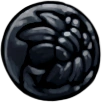
The Hallownest symbol, with its lined oval and three sets of wings, predates the kingdom as it was under the Pale King and White Lady. It can be found on arcane eggs.
Lemm, on arcane eggs: This civilisation may claim itself the first, but something else did exist within this place before Hallownest. Each egg offers a narrow glimpse into that forgotten age.
It's not just the arcane eggs though. The symbol can also be found in the Abyss, on the lighthouse. Sorta.
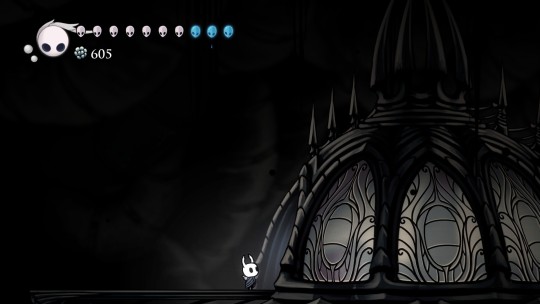
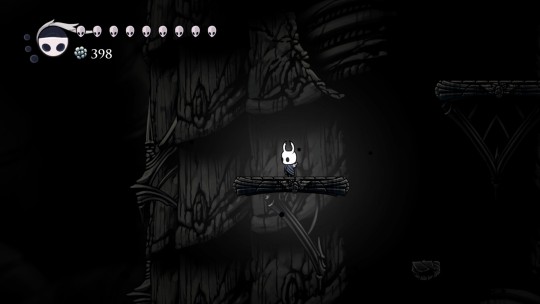
You see, the lighthouse isn't just one structure--it's two. It's an older, crumbling structure....and then the new shiny construction that the Pale King added on top.
And looking at the older structure, the platforms themselves have the Hallownest symbol on it. Oval with wings.
Another detail I've noticed in the Abyss is that this structure isn't the only one. It can be seen in the background around the void sea:
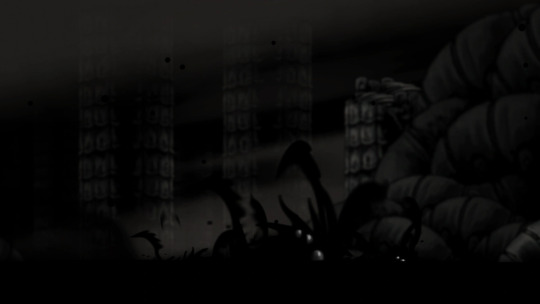
Just, further cementing the thought that the old crumbling building beneath the shiny new top is not a construction under the Pale King, but instead something quite ancient. Just one of many buildings, a conveniently tall structure for the Pale King to repurpose into a lighthouse.
So what does this mean?
Various sources in the game point to the Pale King having portrayed himself as the creator of Hallownest. Lemm, in his quote above. And some more examples:
Lore tablet in King's Pass: Higher beings, these words are for you alone. Beyond this point you enter the land of King and Creator. Step across this threshold and obey our laws. Bear witness to the last and only civilisation, the eternal Kingdom. Hallownest
Hunter's Journal, on wingmoulds: The bugs of Hallownest believed that their King created this world and everything in it. For what purpose, I wonder? Were his subjects companions, or toys, or children? Such a mind seems unknowable.
The developer notes in the game also indicate that the Pale King wanted to get rid of other gods:
The moth tribe were (perhaps) descended from Radiance. However, the King convinced them somehow to seal Radiance away. I guess so he could rule Hallownest with his singular vision, as a monarch/god with no other gods.
The dev notes are not canon and it's clear that they were never intended to be seen by others. But I think there's something to be said at least for him attempting a "singular vision". Uniting Hallownest under one rule, portraying himself as creator, creating a certain order. Some more quotes:
Bardoon: For quiet retreat did I climb up here, away from spitting creatures. Ormmph... Yes. High up. Away from simple minds, lost to light. Theirs is a different kind of unity. Rejection of the Wyrm's attempt at order.
Mask Maker, reacting to Ghost having King's Brand: No bug has ever laid claim to this whole. Even the beasts knew their limits and bound their realm at Nest's edge. It is the ancient caste that made attempt at such vast rule. Hallownest's ruin reflects well those fared attempts.
I believe Mask Maker is referring to the Ancient Civilization having attempted to rule over all of Hallownest. There's a possibility they're referring to Hallownest under the Pale King, as "ancient" does not necessarily mean what fans call the Ancient Civilization (and indeed most instances of the word "ancient" refer to Hallownest under the Pale King). But "attempts" being in the plural, I think Mask Maker intends to draw a parallel here between the two civilizations.
Speaking of King's Brand...

I believe now this is the best symbol of the Pale King we have. His original symbol.
As I noted in my first post on Hallownest symbols, the Hallownest seal seems the most associated with the Pale King when it has the crown on it. And the few actual depictions of him, in statues, idols, and shrines, all have his crown, but lack wings. Save for the glowing silhouette of him in Ogrim's dream battle, there are no depictions of him with wings. He may lack wings entirely, or have some form of artificial wings.
In fact, I find it quite interesting how you can pick up monarch wings as an item.
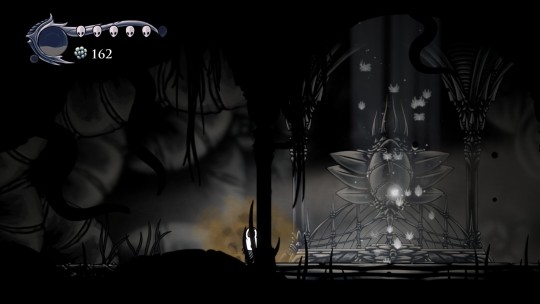
They are described by the game as being made of "ethereal matter". The game manual calls them "wings of a monarchfly". It's possible that the Pale King had such wings as seen here, not part of his original body, but made somehow.
And, just to look at the symbols again...

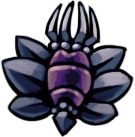
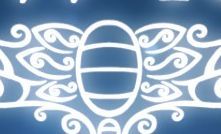
If one were to superimpose the old Hallownest Seal from the time of the Ancient Civilization on top of the King's Brand, you'd get the current Hallownest Seal. Oval Bug body, wings, crown, and tail.
So, what I'm thinking, the impression that I'm getting....
The Pale King came to Hallownest. He saw all the evidence of the Ancient Civilization, which had already fallen. He took on bug form (which may have happened before or after he saw the symbol and other evidence of the ancient civ, but I have to wonder if witnessing Hallownest's history and symbols influenced even this decision to become small). He, for reasons beyond the purpose of this post, decided he wanted to rule Hallownest as king and "creator" (which again may or may not have been part of his decision to be reborn).
He established his kingdom. He took on aspects of preexisting Hallownest, essentially claiming the legacy of the Ancient Civilization as his own. He took on bug form, and gave himself wings, to match this old image, as if it was always about him.
He established his palace in the Ancient Basin. He had access to the Abyss, mostly closed off from the rest of the populace. He studied the void. But the bugs of the Ancient Civilization had a different attitude about void, as indicated by Lemm in the Hunter's Journal entry on the void idol:
Inspired or mad, those ancient bugs. They devoted their worship to no lord, or power, or strength, but to the very darkness itself.
The Pale King instead was worshipped as a god by his people. He instead treated the void as something to control. He studied it. He tested it. He created void constructs to guard his palace. He used it, to stake the future of his entire kingdom on.
I could go on and on about this. And I intend to. But this is as far as I will go in this post, meant to be an update to my last post on symbols. But, I already have a long post I put together months ago, didn't post, and just have to update with new thoughts. So hopefully, I'll be expanding on all the implications here for Hallownest history soon enough.
751 notes
·
View notes
Text
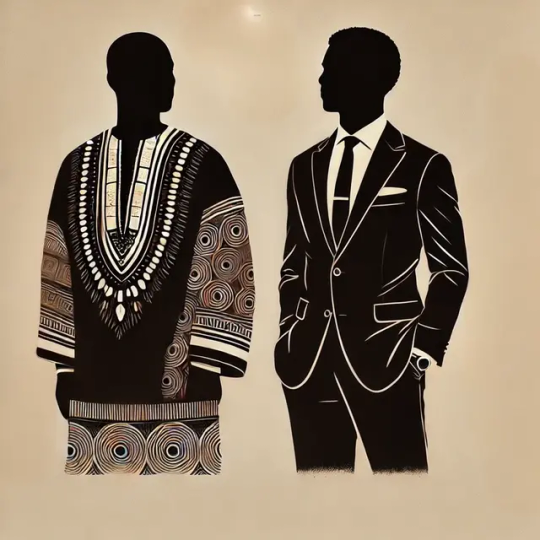
The Difference Between Cultural Identity and Class-Based Behaviour: A Garveyite Perspective on Black Consciousness, Liberation, and Self-Determination
From a Garveyite perspective, which prioritizes Pan-African unity, self-reliance, and the restoration of African/black consciousness, there is a crucial distinction between cultural identity and class-based behaviour that many Black people fail to recognize. This confusion has been intentionally manufactured through colonialism, white supremacy, and capitalist exploitation to keep Black people divided, assimilated, and disconnected from their true heritage.
At its core:
Cultural identity is the collective historical, linguistic, spiritual, and ancestral continuity of a people.
Class-based behaviour is a social construct based on material wealth, economic status, and Western-defined respectability.
This analysis will examine:
Defining Cultural Identity vs. Class-Based Behaviour.
How Colonialism and White Supremacy Engineered This Confusion.
Examples of This Confusion in Black Communities.
Consequences of Mistaking Class for Culture.
The Garveyite Solution: Returning to Pan-African Identity and Self-Determination
1. Defining Cultural Identity vs. Class-Based Behavior
To understand why many Black people confuse the two, we must clearly define them.
Cultural Identity (Rooted in Ancestry & Collective Consciousness)
A people’s shared history, values, traditions, language, spiritual beliefs, and customs.
In the African diaspora, cultural identity is tied to Pan-Africanism, black nationalism, African spirituality, and indigenous traditions.
Remains constant regardless of economic status—it is not defined by wealth or material possessions.
Rooted in African/black philosophy, communal living, and intergenerational knowledge.
Example: Practising African naming traditions, speaking African languages, honouring ancestors, wearing traditional African clothing, and celebrating Black resistance movements are expressions of cultural identity.
Class-Based Behavior (Rooted in Social and Economic Status)
Dictated by income, education level, and Western ideals of success.
Tied to capitalism, assimilation, and Eurocentric concepts of "civilization."
Can change depending on wealth—a person’s social status can rise or fall, but their cultural identity remains.
Enforces Western respectability politics, which dictates how a Black person must dress, speak, and behave to be deemed "successful" in white society.
Example: Some Black elites believe that speaking “proper English,” wearing suits, or getting degrees from Western institutions makes them more cultured—when in reality, these are simply class markers imposed by European systems.
Garveyite Perspective: Black people must recognize that cultural identity is about ancestral roots, Pan-Africanism, and collective liberation—not white validation through social mobility.
2. How Colonialism and White Supremacy Engineered This Confusion
Black people did not naturally develop this confusion—it was imposed on them through slavery, colonial rule, and systemic oppression.
A) Cultural Erasure Under Slavery & Colonialism
African languages were banned, and European tongues were forced upon enslaved Africans.
Indigenous African religions were demonized, and Christianity was imposed to maintain control.
Western education was introduced as the only legitimate form of intelligence.
European clothing and social etiquette were enforced as signs of "civilization."
Tribal and ethnic divisions were created to prevent unity among African peoples.
Example: In the Caribbean, enslaved Africans were deliberately separated from those who spoke the same language to prevent rebellion. In America, Black people were taught that English-speaking, well-dressed house slaves were “superior” to field slaves—creating a false class hierarchy.
B) The Rise of Respectability Politics
After slavery, Black people were pressured to prove their worth to white society by adopting European norms of behavior:
Speaking English "properly" was seen as a sign of intelligence.
Dressing in Western attire (suits, ties, dresses) was deemed respectable.
Christianity was used to reinforce submission, obedience, and assimilation.
Black professionals distanced themselves from poor, working-class Black people.
Example: The Talented Tenth philosophy promoted by W.E.B. Du Bois suggested that a small, highly educated Black elite should lead the race—while Garveyism argued for mass empowerment, economic self-reliance, and a return to African traditions.
Garveyite Perspective: Any ideology that promotes integration into a white supremacist society instead of African self-determination is anti-Black.
3. Examples of This Confusion in Black Communities
Many Black people still mistake economic status and Western respectability for cultural identity. Here are some examples:
A) Language & Speech
Some Black people believe that African-American Vernacular English (AAVE), Patois, Creole, or African languages are “ghetto”, while standard English is “educated.”
In reality, African linguistic structures influence these languages, making them part of our cultural identity.
Example: Many Caribbean and African immigrants are conditioned to believe that abandoning their mother tongues and adopting British or American English is a sign of intelligence, when in fact, this is an example of colonial indoctrination.
B) Clothing & Grooming
Some Black people believe that wearing African/black clothing is “backwards” or “unprofessional”, while wearing a suit and tie makes one respectable.
But a suit and tie is a European standard of dress, not an African or black one.
Example: Black and African clothing that remains uninfluenced by European styles is the kente cloth of Ghana. Woven by the Akan people for centuries, kente is a traditionally handcrafted fabric made from silk and cotton, featuring intricate patterns that hold deep cultural and spiritual significance. It has been worn by Ghanaian royalty and remains a symbol of heritage, status, and pride. Unlike European textiles, kente's designs, colours, and weaving techniques are rooted entirely in African traditions, showcasing a purely indigenous fashion identity.
C) Education & Intelligence
Some believe that having a degree from a Western university makes someone more cultured.
But Western education often promotes anti-Black narratives and European supremacy.
Example: Many Black intellectuals look down on grassroots organizers and Pan-African movements, seeing themselves as superior due to their Western degrees.
Garveyite Perspective: True intelligence is not determined by a degree from Harvard or Oxford—it is measured by self-education, community impact, and Pan-African consciousness.
4. Consequences of Mistaking Class for Culture
This confusion has caused major harm within the Black community:
A) Classism & Division
Black elites often distance themselves from the working class.
Africans and Caribbeans sometimes look down on Black Americans, believing their struggles stem from a lack of "ambition" instead of systemic racism.
Example: African immigrants are often taught that Black Americans are "lazy," when in reality, Black Americans face systemic barriers that prevent economic mobility.
B) Cultural Assimilation & Loss of Identity
Black people abandon African languages, traditions, and values in favour of Western norms.
African spirituality is demonized, while Christianity and Islam remain dominant.
Example: The African American upper class in the 1900s married lighter-skinned partners to gain social status—showing that whiteness, not African identity, was their measure of success.
Garveyite Perspective: Liberation comes through Pan-African unity and cultural reclamation—not integration into white systems.
5. The Solution: Reclaiming a Pan-African Consciousness
To break free from this confusion, Black people must return to authentic Pan-African identity and self-determination.
A) Prioritize African-Centered Education
Learn about African history, languages, and traditions outside of Western institutions.
Stop equating European education with intelligence.
B) Define Success on Our Own Terms
Success is not white approval—it is economic independence, cultural pride, and collective self-reliance.
Stop chasing corporate jobs, luxury brands, and European validation.
Garveyite Perspective: Only through self-sufficiency, cultural pride, and Pan-African unity can Black people truly be free.
Final Thought
Black people must stop confusing class-based Western behaviours with true African/black cultural identity. Only by reclaiming Pan-African consciousness, rejecting respectability politics, and prioritizing self-determination can true liberation be achieved.
---
Tumblr Tags:
#black history#black people#blacktumblr#black tumblr#black#pan africanism#black conscious#africa#black power#black empowering#blog#Garveyism#Garveyite#marcus garvey#class divide#cultural identity#self determination#black liberation#economic empowerment#african heritage#african culture
27 notes
·
View notes
Text
Mars Signs Maturity & Immaturity
Mars in Aries:
Immature: Impulsive and quick to anger, they may engage in reckless behavior and thoughtless actions without considering the consequences.
Mature: They harness their passion into productive pursuits, displaying self-control and strategic thinking to address conflicts with assertiveness and fairness.
Mars in Taurus:
Immature: Stubborn and unyielding, they may refuse to consider alternative perspectives, leading to prolonged standoffs and an inability to find common ground.
Mature: They demonstrate patience and flexibility, cultivating understanding and compromise to reach mutually beneficial resolutions without sacrificing their principles.
Mars in Gemini:
Immature: They engage in verbal sparring and manipulation, using their wit and intellect to outsmart others and win arguments at the expense of honest and open communication.
Mature: They prioritize empathetic listening and constructive dialogue, fostering intellectual stimulation and mutual understanding to promote healthy and respectful debates.
Mars in Cancer:
Immature: They resort to passive-aggressive behavior and emotional manipulation, using guilt and mood swings to control the narrative and avoid direct confrontation.
Mature: They communicate their feelings openly and directly, fostering emotional vulnerability and establishing boundaries to promote a supportive and nurturing environment for conflict resolution.
Mars in Leo:
Immature: They seek attention and validation through dramatic outbursts and egotistical displays, demanding admiration without considering the feelings of others.
Mature: They express their emotions with grace and humility, channeling their passion into creative endeavors and genuine acts of kindness to foster a harmonious and supportive atmosphere.
Mars in Virgo:
Immature: They become overly critical and perfectionistic, focusing on trivial details and disregarding the bigger picture, leading to a tense and nitpicky environment.
Mature: They maintain a pragmatic and practical approach, utilizing their attention to detail to offer constructive solutions and create a supportive and efficient atmosphere for conflict resolution.
Mars in Libra:
Immature: They avoid conflict and decision-making, sacrificing their needs and opinions to maintain superficial harmony, often leading to unresolved tension and underlying resentment.
Mature: They strive for genuine harmony and fairness, encouraging open communication and compromise to build mutually beneficial relationships and foster a sense of unity and understanding.
Mars in Scorpio:
Immature: They exhibit vindictive and secretive behavior, holding onto grudges and seeking revenge, fostering an environment of mistrust and emotional volatility.
Mature: They embrace vulnerability and transparency, addressing conflicts with honesty and courage, fostering deep and authentic connections based on mutual respect and emotional growth.
Mars in Sagittarius:
Immature: They become tactless and argumentative, prioritizing their opinions over the feelings of others, often leading to heated debates and a disregard for emotional sensitivity.
Mature: They promote open-mindedness and respect, engaging in meaningful discussions and fostering a sense of adventure and personal growth, encouraging mutual learning and understanding in all interactions.
Mars in Capricorn:
Immature: They exhibit emotional detachment and authoritarian behavior, prioritizing their goals and ambition over the well-being of others, leading to a rigid and unyielding environment.
Mature: They demonstrate responsibility and leadership, fostering a sense of discipline and accountability in all interactions, striving for practical and sustainable solutions that benefit everyone involved.
Mars in Aquarius:
Immature: They display rebellious and unpredictable behavior, challenging authority and disrupting the status quo without considering the impact on others, fostering an environment of chaos and emotional distance.
Mature: They promote innovation and unity, encouraging collaborative problem-solving and forward-thinking initiatives, fostering a sense of inclusivity and progressive change for the greater good.
Mars in Pisces:
Immature: They resort to escapism and passive resistance, avoiding direct confrontation and responsibility, often leading to a sense of emotional confusion and unaddressed issues.
Mature: They practice emotional self-care and empathy, fostering a compassionate and understanding environment for open communication and conflict resolution, encouraging vulnerability and mutual growth.
#astrology#astrology mars#astrology maturity#astrology anger#astrology arguments#mars in signs#astrology observations
275 notes
·
View notes
Text
Malaysia's Independence
What does 'Les Misérables' mean to you?
The clips shown below is of the declaration of independence in 1957, marked with the nation's final blaring of 'God Save the Queen' as the British flag is lowered. Merdeka ('independence') is called out seven times. British Malaya has ended.
The later clips show the anniversary of the celebration of the initial year of independence after a long, long history of colonisations.
After the ethnic divide the British enforced in order to maintain order and power, Malaysia unites its citizens; and thus the ending quote, 'There's no Chinese, no Malay, No Indian... Just Malaysians.' appears.
To celebrate the independence day, the themes of ethnic unity is emphasised. Through unity, they achieved independence and liberation away from several hundreds of years (446 years, 1511-1957) of colonisation from multiple global powers.
youtube
Under British colonial rule (1786-1941), Malaya was not merely a colony but a key part of the British Empire's economic engine, with the British exploiting the country’s natural resources, particularly tin and rubber, and using its strategic location for global trade.
The British officials made sure that the traditional class divisions should be maintained. "Hence, most economic development was left to Chinese and Indian immigrants, as long as it served long-term colonial interests."
The British introduced a divide-and-rule strategy that entrenched ethnic divisions, particularly between the Malays, Chinese, and Indians, creating a fragmented society that served British interests, and of which was constructed on race and occupation.
The British colonial administration’s reluctance to address the needs and aspirations of the local population, preferred instead to maintain control through appointed elites and limited self-rule.
If we remember from the British rule of India, the class divisions they encouraged and maintained was based on religion. This later invited social and economic division, and ultimately created India and Pakistan to become two countries from the year of their independence.
The British had the habit of ruling like that. Malaysia got lucky, and they didn't go through this type of partition.
Immediately after WWII, Malaysians were fighting off the Japanese in the British backed the Chinese-Malysians with weapons, in which the communists also turned their backs and pointed the weapons at the British during this period.
The Malayan Emergency (1948–1960), a brutal conflict primarily with the Malayan Communist Party (MCP), was a direct consequence of British mismanagement and their failure to grant the right of to freely determine their own political status and pursue their economic, social, and cultural development without interference from foreign powers or colonial rulers.
The British response to the communist insurgency, which included mass incarcerations, punitive actions, and the establishment of a system that disenfranchised much of the local population, only heightened the desire for self-rule.
Despite the difficult path to independence, marked by years of struggle and frustration, the establishment of the Alliance Party (comprising UMNO, MCA, and MIC) in 1951 was a pivotal moment, showing the potential for cooperation across ethnic lines.
The Tunku Abdul Rahman-led Alliance successfully pressured the British to concede political power, yet equality was still out of reach.
The British, while eventually agreeing to grant independence in 1957, had no real intention of relinquishing control easily, and the agreements made were more about preserving British interests and maintaining influence.
The final negotiations in London in 1956, which led to the London Agreement, were not entirely driven by the aspirations of the local population, but rather by the pragmatic need for the British to stabilise the region amidst the larger decolonisation movements taking place around the world; as anti-colonial rebellious sentiments were being quickened as the news of Ghandi were spreading.
Ultimately, the independence celebrations of 31 August 1957 marked the end of formal colonial rule.
youtube
The Merdeka Day celebrations focuses on unity and democratic freedom which had been forced on them whilst the colonial power tried to manipulate its citizens to fight against one another.
This period of time is characterised by the complex negotiations between a colonial power and a fragmented, yet resilient, population seeking liberation, unity, and equality.
#Youtube#protests#independence#malaysia#english#malay#merdeka#les mis#It's quite literally 4am here!! I spent some time researching#but I am also tired#so please tell me if I got anything wrong#and I'll speed to the edit button!!#history#british colonialism#lyric rewrite#research
11 notes
·
View notes
Text
[”the divided self”, r. d. laing]
so far we have considered only the relationship of Julie with her mother. but now, before we can go further, we must say a word about the total family constellation
in recent years, the concept of a 'schizophrenogenic' mother has been introduced. fortunately an early 'witch-hunt' quality about the concept has begun to fade. this concept can be worked out in various rather different ways, but it can be stated in the following terms: there may be some ways of being a mother that impede rather than facilitate or 'reinforce' any genetically determined inborn tendency there may be in the child towards achieving the primary developmental stages of ontological security. not only the mother but also the total family situation may impede rather than facilitate the child's capacity to participate in a real shared world, as self-with-other
it is the thesis of this study that schizophrenia is a possible outcome of a more than usual difficulty in being a whole person with the other, & with not sharing the common-sense (i.e. the community sense) way of experiencing oneself in the world. the world of the child, as of the adult, is 'a unity of the given & the constructed' (Hegel), a unity for the child of what is mediated to it by the parents, the mother in the first instance, & of what he makes of this. the mother & father greatly simplify the world for the young child, & as his capacity grows to make sense, to inform chaos with pattern, to grasp distinctions & connexions of greater & greater complexity, so, as Buber puts it, he is led out into 'a feasible world'
but what can happen if the mother's or the family's scheme of things does not match what the child can live & breathe in? the child then has to develop its own piercing vision & to be able to live by that - as William Blake succeeded in doing, as Rimbaud succeeded in stating, but not in living - or else become mad. it is out of the earliest loving bonds with the mother that the infant develops the beginnings of a being-for-itself. it is in & through these bonds that the mother 'mediates' the world to the infant in the first place. the world he is given may be one he can manage to be in; it is possible, on the contrary, that what he is given is just not feasible for him at the time. yet, despite the importance of the first year of life, the nature of the milieu in which the child has to exist throughout its infancy, childhood, & adolescence may still have great effect one way or the other. it is at these subsequent stages that the father or other significant adults may play a decisive role in the child's life, either in direct relation with the child or, indirectly, through effects on the mother
these considerations suggest that one might do better to think of schizophrenogenic families, rather than too exclusively of schizophrenogenic mothers. at least, doing so might encourage more reports of the dynamics of the family constellation as a whole, instead of studies of mothers, or fathers, or siblings, without sufficient reference to the whole family dynamics
Julie's sister, three years older, was a rather forthright assertive married woman, not, however, without femininity & charm. according to her mother, she had been 'difficult' from birth: demanding & always 'a trouble'. in short, she seems to have been a relatively 'normal' child of whom her mother never very much approved. but they appeared to get on well enough together. the sister regarded her mother as a rather dominating person if one did not stand up to her. but 'she's done everything for Julie, & Julie was always her favourite'. it was quite clear that this sister had early on achieved integral autonomous status. if one cared to look closely into her personality, there were many neurotic elements to be found in her, but there seemed little doubt that at least she had achieved the primary ontological status that Julie had never reached. when she was a child, she had friends of her own age, just too old for Julie, & Julie did not appear to have come close to her. Julie, however, had built into her scheme of phantoms a big sister who was one of the few predominantly good figures in her 'world', 'a Sister of Mercy'
the father had a more obviously significant part to play. in her mother's eyes, he was a 'sexual beast'. in his, her mother was cold & unsympathetic. they spoke to each other no more than was absolutely necessary. he found sexual satisfaction elsewhere. however, although they had many accusations to make against each other, neither built into these accusations any allegations about mistreating their daughter. the father, indeed, as he said, had not much to tell me, because he had 'withdrawn himself emotionally' from the family before Julie was born
the patient's sister told me two incidents, both of which must have been of very great importance to Julie. the first her mother probably did not know about; the second she could not bring herself to tell me of. we shall return to the second incident later. the first occurred when Julie was fourteen or fifteen. despite her father's distance from her & his relative inaccessibility, Julie had seemed fond of him. he occasionally took her for a walk. on one occasion Julie came home from such a walk in tears. she never told her mother what had happened. her mother mentioned this to me to say that she was sure that something awful had taken place between Julie & her husband but she had never discovered what. after this, Julie would have nothing to do with her father. she had, however, confided to her sister at the time that her father had taken her into a call-box & she had overheard a 'horrible' conversation between him & his mistress
Mrs X did not hesitate to miscall her husband to her daughters, & in piling up innumerable instances of injustices she tried to get them on her side. however, the elder sister took a middle way, & Julie apparently would never openly collude with her mother against her father: after the telephone-box incident, she simply cut herself off from him but would not supply the information for grist to her mother's mill. the father, however, had, as he said, withdrawn himself from the family. he did not make accusations against his wife to his daughters, since he did not need their support against her. although he regarded her as a useless wife, 'To be fair to her,' as he put it, 'she was a good mother. I have to grant her that.' the elder sister saw faults on both sides but tried as far as possible to be reasonable & balanced, & not to take one side more than another. but if she had to, she took her mother's side against her father, & her mother's side against Julie. in this latter respect, it was not unreasonable that she should do so. Julie's accusations against her mother were, from a matter-of-fact, common-sense point of view, wild & phantastic from the first. they must have sounded from the start rather mad. to 'rant & rave' about being smothered & not being allowed to live & be a person seemed to this ordinary common-sense family to make no sense at all. she said her mother had never wanted her, & yet she was the favourite; her mother had done everything for her & given her everything. she said her mother was smothering her, & yet her mother was urging her to grow up. she said her mother did not want her to become a person, & yet her mother was urging her to make friends, go to dances, etc.
it is remarkable that, despite the radical disruption of the relationship between husband & wife, in one respect at least they maintained a collusion. both accepted the patient's false self as good & rejected every other aspect of her as bad. but in the 'bad' phase, a corollary to this was perhaps even more important. not only did they reject as bad all of Julie apart from the compliant lifeless shadow which passed in their eyes for a real person, they completely refused to 'take to heart' any of the reproaches that Julie had against them
Julie & her mother were at this time both desperate people. Julie in her psychosis called herself Mrs Taylor. what does this mean? it means 'I'm tailor-made'. 'I'm a tailored maid; I was made, fed, clothed, & tailored.' such statements are psychotic, not because they may not be 'true' but because they are cryptic: they are often quite impossible to fathom without the patient decoding them for us. yet even as a psychotic statement this seems a very cogent point of view & it gives in a nutshell the gist of the reproaches she was making against her mother when she was fifteen & sixteen. this 'ranting & raving' was her 'badness'. what i feel must have been the most schizophrenogenic factor of this time was not simply Julie's attack on her mother, or even her mother's counter-attack, but the complete absence of anyone in her world who could or would see some sense in her point of view, whether it was right or wrong. for various reasons, neither her father nor her sister could see that there was any validity in Julie's side of the argument. like our group patient (p. 43) she was not fighting to win an argument, but to preserve her existence: in a way, Julie was not simply trying to preserve her existence, she was trying to achieve existence. we can see, i think, that by fifteen or sixteen, Julie could hardly have developed what one might call 'the ability of common sense'. the common family sense accorded 'her' no existence. her mother had to be right, totally right. when her mother said she was bad, Julie felt this as murder. it was the negation of any autonomous point of view on her part. her mother was prepared to accept a compliant, false self, to love this shadow, & to give it anything. she even tried to order this shadow to act as though it were a person. but she had never recognized the real disturbing presence in the world of a daughter with her own possibilities. the existential truth in Julie's delusions was that her own true possibilities were being smothered, strangled, murdered. to exist, to be able to breathe, Julie felt that her mother had to admit that she could have been wrong about some things, that she could have made mistakes, that there was a sense in which what her daughter said could be right & have weight. putting it in one way, one might say that Julie needed to be allowed to project some of her bad-self into her mother, & to be allowed to take some goodness out of her mother, not merely to be given it all the time. but, to the whole family, Julie was trying to prove white was black. reality did not yield. she began to convert existential truth into physical facts. she became deluded. if she began by accusing her mother of never having let her live, in an existential sense, she ended by talking & acting more than half as though her mother had, in a legal sense, actually murdered an actual child, & it was quite clearly a relief to the family when they could then pity her & no longer have to vindicate themselves by condemning her. only her father, in a curious way, treated her as a responsible person. he never admitted that she was mad. to him she was wicked
he was not 'taken in' by her game. it was all an expression of spite & ingratitude. he regarded what we called her catatonic negativism as sheer 'thrawn-ness', her hebephrenic symptoms as vindictive silliness. he was the only one of the family who did not pity her. on some of his occasional visits, he was known to have shaken & pinched her & twisted her arm to get her to 'stop it'
8 notes
·
View notes
Text


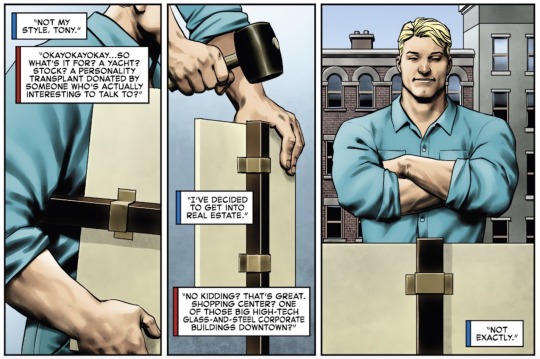
Cap #1 by J. Michael Straczynski. This is a 16-issue series that was running around the same time as Fall of X, but having now read through it, I see current comic events basically aren't even referenced, and the run itself doesn't change Steve's status quo much or have anything that's particularly dramatic, so I suspect there isn't going to be a lot of fic that takes place during this run. As such, I'll breeze through the plot and mostly focus on the fun (and sometimes not-so-fun) characterization and canon tidbits the run gives us. But first, here's the one thing that does change about Steve's status quo: Steve buys a building in his first issue! It's apparently the building his parents lived in (located in the Lower East Side), but everyone got an eviction notice, so Steve decides to call Tony up so he can get the money to buy the building himself and become the landlord. What follows is a very MCU-ish exchange that totally contradicts current canon (Tony is dirt poor right now, and while Steve has the Unity Squad, I am not convinced that that's what he's talking about when he refers to his Avengers salary). Wrangling this into the timeline will be a problem for future me. Anyway: thanks to Tony, he owns a building now. Cool!
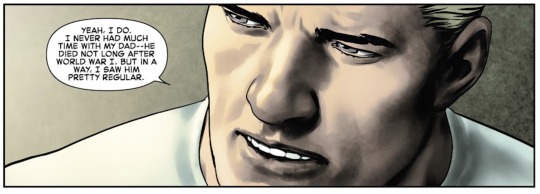

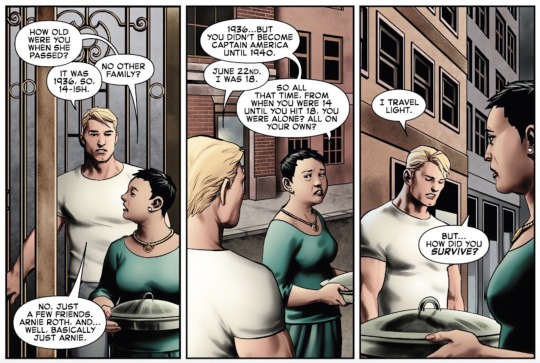
Steve's dad died shortly after World War I. Steve and his mom visited his grave twice a year to talk to him. Then his mom passed in 1936 when he was 14, and he visited both their graves. Arnie Roth was his main friend. He became Captain America on June 22, 1940, at the age of 18 (so young!!). Also, sometimes his mom would look at him on the street from her apartment when she thought he wasn't looking, but he was aware, and sometimes he would look up at her when he thought she wasn't looking.

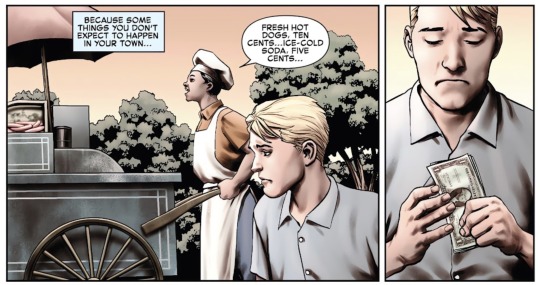

Then we get a pre-serum Steve flashback, which turns out to be its own arc for the next few issues. Basically, after his mom dies, he can't pay rent anymore. He lives in a condemned building and works a ton of odd jobs to earn money - construction, washing cars, walking dogs, bagging groceries, selling newspapers. Eventually, Arnie tells him he has a lead for a less janky place to live in, so he starts saving for that. Then one day at the park (now 1938, so he apparently lived there for... a while...), he's eyeing food real longingly because he is soooo hungry, but he resists. A stranger then tells him there's a rally giving out free food, so he goes and gets a ham sandwich. He's about to chow down, when - oh no! It turns out that the rally is being held by the German American Bund (so, you know, Nazis).
Meanwhile, in the present day, Steve helps out the Fantastic Four (a cameo appearance) while Asmoday, a demon, finds a body to possess and meets up with an A.I.M. person.
- Captain America Vol 11 #1 (2023)
#captain america vol 11#captain america vol 11 1#2023#steve rogers#arnie roth#sarah rogers#tony stark#stevetony
11 notes
·
View notes
Text
which door do you open? ( tarot & oracle it's timeless)

door 1 :
you open the door of a construction, of the effort towards a unity, a transformation, I have the balance card, we can speak of a settlement after a separation, opening of a calm after a divorce or a separation . I see a renewal of hostilities between 2 people here. We ask you to stay focused on the light and on your own future and the construction of your future, because you are at the start of a new creative or real estate project.
It's time to take some rest and get to work. We speak of a healing of the heart for some to stay with their child. We speak of a rebirth with a healing of the heart and emotional wounds.
with the tarot cards, we speak of a new, calmer, more temperate beginning, there is a notion of believing that we are helpless and confined by a role or by a social status yet we speak of a non-physical death, we speak of solitude and to get away from that precisely but with the accirt of a king of swords who is quite emotionally immature. We are talking about a happy ending for a feminine energy with this agreement or choice or acceptance on the part of a king of swords

door 2: it is the initiation into a karmic meeting which will shake up your strength, your instinct, will you succeed in seeing this person or will you continue to observe your past, your failures… there will be an intense energy during the summer until winter to obtain results on a work that you have done, there will be communication cuts with some of your guides because of your fears, we are talking about work on self-confidence.
with the tarot cards: it will be a challenge for you, mastering your fears and your shadow. Move forward even if you experience failures and fears. Turn your back on your past and stay open to your future, you will learn how to gain mental strength, certain fears linked to your relational aspect from the past may return!!
you will continue to work on your own abundance
48 notes
·
View notes
Text
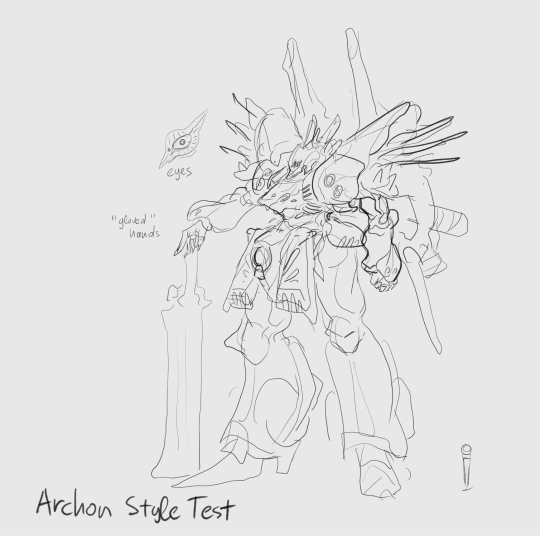
Proto-Archon Achamoth
After five years of research and design guided by the initial discoveries of Amirani, Pearson et al, we believe that we have produced a unique interface between the biological and the mechanical, vastly exceeding the capabilities of even integrated syntra, that should prove capable to achieve a nymphic status between hylikos and ██████
With the usage of existing supply lines, we expect to be able to produce a suitable prototype within the next two years. Sophia se kathodigei.
-- Correspondence from █████████ to ██████, retrieved from Dir. Pearson's communications log by ██████
Archons represent the true heights that man can achieve in nearly every discipline touched by them: not just computer science, materials science, and engineering, but psychology, biology, applied theoretical physics, and chemistry. No single person can truly understand the functions of an Archon- it is a construct that requires the unity of man to function. To pilot an Archon unit is to become one with a monster: a robot with synthetic muscle netting, a circulatory system. A spongy mass of ganglia, gold wire and pale nerves intermingling under a ceramic-chitin plate of armor, thrumming with impulse and sensory data.
To pilot an Archon, is to transcend your humanity.
-- Dir. Pearson, onboarding speech to new candidates of the Archon Program
A concept sketch of Proto-Archon Achamoth by @himecommunism !
80 notes
·
View notes
Text

“The very center of your heart is where life begins. The most beautiful place on earth.” ― Rumi
Quetzalcóatl - Wind Sun (Nahui Ehecatl) Talon Abraxas
Ancient Mexican legends tell of great cycles of construction and deconstruction of the world. There was a new dawn, a new age was about to begin, but the sun created through divine sacrifice would not move, so the Feathered Serpent took it upon himself to sacrifice the gods to move it. But it was not enough. So, he stood up, mustered all his strength, hurled vast amounts of air into his cavernous chest and blew with all his might on the sun. Then the sun moved and the moon moved, and they took up the path that they still follow to this day.
The new dawn arose, a new age was about to begin, but the earth was uninhabited, so the Feathered Serpent took it upon himself to create humanity to repopulate it. He descended to the dangerous Land of Dead to plead with the Lord of Death for the bones of ancestors. After fulfilling an impossible task, he still could not take the bones, so he stole them and managed to escape the revenge of the underworld god. The Feathered Serpent went to the place of origin where the goddess of motherhood, the Woman Serpent helped him. Thus, from the mixture of the bones of ancestors and the blood of gods, the humans that still live today were born. The Feathered Serpent blessed them with maize, the arts of weaving and mosaic-making, music and dance, the science of curing illness, crafts, knowledge, time, the stars in the heaven, the calendar, prayers and ceremonies.
The Feathered Serpent is found in Mesoamerican culture under many names and in many different stories that have common features. Toltecs and Aztecs and other Nahua peoples knew him as Quetzalcoatl (from the Nahuatl words “quetzal” – “bird” and “coatl” – serpent), the K’iche’ Maya as Q’uq’umatz, the Yucatec Maya as Kukulkan. He appeared in images, statues and carvings from around 100 BCE. From 1200 the Feathered Serpent began to be depicted in human form. Major Mesoamerican cities were organized around shrines that carried the image of the Feathered Serpent. As both bird and serpent he represents the unity and rulership of the celestial over the terrestrial, the ability of the spiritual to elevate the material.
The Quetzalcoatl of the Aztecs is both a creator-god and a ruler-initiate of the sacred city of Tollan. As a god, Quetzalcoatl is associated with fertility and life itself. One aspect of Quetzalcoatl, Ehecatl, is the god of wind, who appears in the breath of living beings and the breezes that bring the life-giving rain clouds. Being one of the four sons of the primeval dual creator god, source of all, Quetzalcoatl is the creator of the cosmos along with his brothers in every new cycle.
The myth usually narrates the story of two brothers, Quetzalcoatl and Tezcatlipoca – the latter associated with conflict and change – who are sometimes antagonists and sometimes allies. They repeatedly fight each other and with each successive battle the world is created and destroyed. Thus, there have been four previous ages of the world, and we are now living in the fifth one. Quetzalcoatl was the Sun in the second age and loved the people dearly.
The Aztec legends also tell the story of the human plumed serpent – the famous ruler of the ancient sacred city of Tollan. His name was Ce Acatl Topiltzin Quetzalcoatl (“One Reed [birth date], Our Prince, the Feathered Serpent”). It is considered that he established himself first as a fierce warrior and then as a priest with profound understanding and strong morality. When he became a ruler, he embodied the function of the creator god at his own level of responsibility and built Tollan to be a centre of civilization. He taught his people science and morality, formulated wise laws and showed how best to work their land. Topiltzin forbade human sacrifice and was appreciated for having constructed wonderful ceremonial structures, including temple pyramids, and for ordering peaceful coexistence.
Topiltzin became the preeminent archetype for priests and rulers. Later, every priest in this region was considered to be an embodiment of Topiltzin.
While everyone was happy with Quetzalcoatl’s reign, his rival Tezcatlipoca was plotting his downfall. He brought many disasters on the people and eventually tricked Topilitzin into a misdeed. Thus, to his great sorrow the ruler was forced into exile. On reaching the gulf coast, Topiltzin immolated himself and rose into the sky as Venus. Other accounts say he boarded a raft of serpents and sailed towards the east, vowing to return again.
Maybe the myth about the return of Topiltzin Quetzalcoatl can be interpreted as the hope and the call for inner spiritual growth of a human being, so that they unite the heavenly and the earthly, become creators of their life, allowing best of their potential to be manifested in this world.
23 notes
·
View notes
Text
The offspring of rock through synthecism
Hey everyone ! This week's post will be using both the content of the chapters of Identities and Politics from the Negus. Today I'll be portraying one of the artist I hold high regards to, Delilah Bon, a genius feminist synthecist, an iconic artist combining many genres of music to scream at the top of her lungs pointing out injustices done to minorities. To begin with, her anger fuels the methodically well planned patch-up of genres she represents through her music. By alternating between different ways of expresseing herself such as screaming, singing and rapping she creates a unique worldview that she constructed a well-defined around. Both her beliefs and values, what she stands for defined, her music and audience and I do believe that this is genuinely what I admire about her. Delilah Bon is more than a niche artist but a rising star as a synthecist due to her will to articulate to her audience and create a safe environment in which many are able to be who they are no matter their past experiences, a place where chaos, inner thoughts and rage against the system is freely expressed without any restriction. Her audience is mostly, if not entirely made of people part of the LGBTQ+ community and her shows became gradually a place where everyone could be themselves and be outrageously honest, this is more than a cis white male rapper's show.. Delilah Bon is an embodiment of freedom and she sparks hope, defiance and pride in the heart of people who gathered to hear her tear and scream the statu quo through her songs. Then especially considering how much she is against the patriarchy, the genre of her music, if this could ever be defined, is an off-spring of the geographic mobility of rock. A merging of cultures, values and well-needed honesty about contemporanean politics, their impacts on the people and thus the rage felt, takes over her shows. Would this be worth of defining her music as part of the Riot Grrrrl underground rock ? Indeed, her rock seeks to abolish and challenge the traditional and patriarchal oppression by reclaiming many concepts and ridiculing what is perceived as taboo by the male gaze but also breaks apart social issues that could be swept under the rug for many. Yet her dynamic and poignant analysis of social cases like Roe Vs Wade in the USA is really what brings out the cultural elements under circumstances directly encountered, not chosen by themselves. Her interpretation of rock as a genre allows to close the gap between artist and audience, one voice for a common rage, one person embodying the unheard, someone standing on the same ground as anyone else, someone of the people FOR the people. It is essential to my analysis to take into account that she is an indie artist, creating everything by herself, no one else helps her expect when it comes to the direct creation of her songs except when she's touring and plays with her band, yet she masterfully appropriates herself different genres, ideologies and still manage to craft such professional and outstanding music IF perceived through the Music Industry. I do believe that this is the work of a cultural catalyst that with dexterity challenges the system through mediation of cultural and symbolical values. Delilah Bon is a sincere and earnest artist with no doubt. The circumstances of her works are not only dialogues with the past but the present and future themselves and having no clear boundaries around the topics of her dialogue mediated through her core beliefs is really what makes her shine in all her glory. To emphasize my point, I will add that the community which gathered to hear her play at shows is the literal manifestation of intersection through others, thus creating a synthecism not only of her works but also a sense of unity in a newfound community which shared parts of her values; only to be united together under a new and flamboyant banner ! I'll link here one of her songs and a video of a show so that you may have a better understanding of what I'm talking about !
youtube
youtube
I wanted to put the song cleanly recorded instead of the show, but I think the cover of it might be too explicit for this class so I let you go look it up if you doubted her active feminism (which i do find quite empowering) and I think a live show might be exactly is needed to embody my analysis made on this week's post ! Can't put the names, Tumblr won't let me so I apologize for that.
I wish you all great holidays ! :)
11 notes
·
View notes
Note
I wish mineru got to me an actual character because every single theme we get that has to do with her (thunder islands, spirit temple, construct factory) are so gorgeous and made me fall in love with her, the soundtrack does so much heavy lifting in this game
You're so correct about the soundtrack, it tells such a compelling tale and it really builds off itself constantly, it's genuinely one of my favorite parts of the game!!
Honestly Mineru had tons of potential. I really liked the entire quest to find her and her body, it was the part of the game that kind of sold me the most the mystery and wonder of having such a big world spanning the sky all the way to the Depths. The atmospheric mood of the Thunderhead Isles was wonderful, loved following the light all the way to the Depths (I had already stumbled upon the actual Construct Factory in them before). It was the part of the game that "felt the most zonai" to me, this sort of puzzle-like intricacy of how their influence permeate the world that their name alone was meant to invoke. I regret the lack of worldbuilding here, even a very light one (what was were the Thunderhead Isles? What significance did they have in zonai culture? What about the structures on the ground in the jungle? I would have *loved* more... anything in the Construct Factories), but it was still a treat as a gameplay experience.
(I mean I hated having to pilot the Construct Body itself, but that's more a me problem than a game problem, thankfully the boxing match was a ton of funs regardless)
The character herself though.... Like I feel like there's a lot of potential inherent to her status as one of the last zonais AND her status as the king's sister (not to mention her engineering proclivities). She feels like she should have a very unique perspective on the entire situation, insight about what caused the fall of the zonais (or their departure/refusal to engage with Hyrule), have both tenderness but also criticism towards her brother his wife might not have (as his lover and as an inherently lesser being bound to his good will, she's a priestess so she probably prays to the gods and zonais are said to descend from gods can we talk about that also), share a unique relationship with Zelda through their common love for knowledge (I think Zelda having a strong relationship with Mineru sounds more meaningful than her having one with Sonia as of now tbh, and it would have helped their scenes to be more interesting than an excuse to infodump, I almost said that it's a ship before remembering they're technically related SOMEHOW?? so mayyybe not).
But in practice, she has no desires of her own. She's but an extension of her brother's will, except softer, muted, heartbroken not for her loss (and the fact that her entire race is about to die out once she does), but for Hyrule's perdition. I am still not over the fact that when she swears her oath of fielty to Link, she *touches her brother's hand*, aka the only meaningful relationship in her life that we got to see, zonai skin touching zonai skin for... probably the last time ever? And the camera couldn't care less. No lingering, no body tension, not even one of the little sounds that BotW/TotK characters love to make in cutscenes everytime anything happens, not even any callback to the explicit motif of people touching each other's hand as a sign of support and unity (so you know what symbolism/allegory means game!!! you know this!!!!), the game doesn't seem to be aware that she should be a person with feelings that extend beyond her performative guilt about a situation that has basically nothing to do with her/she couldn't have done anything about/she did everything she could about, actually! She's just here to be a vessel for the restoration project of her brother's kingdom (Rauru being the only one allowed any emotion of genuine grief and upset, and it only lasts like half a second --which sucks!! I wish that, if Sonia was to be fridged anyway, it at least motivated him to become vengeful and furious and make a mistake that costed him his victory, which would have made him sliiightly more compelling instead of reverting back to a fancy cardbox of unquestionned perfection).
Also she's technically the last one you're supposed to get (but you can get her first??? this is such a weird choice sometimes linearity is good nintendo!!!), and after such a long quest, there should have been a narrative reward to finding her that goes harder than "and then Rauru decided to hype you up like crazy to Ganondorf, also Zelda is probably a dragon but you probably already know that" in my opinion. Some modicum of depth; a different emotional texture to the conflict. After that much build up, the payoff didn't land for me.
Yeah. Mineru. She really could have been the aqua-glue holding that ultrahand-ass of a plot together, but Alas.....
#asks#tloz#totk#totk spoilers#totk critical#mineru#rauru#zonai#thoughts#thanks for the ask and sorry for the time it took me to reply!!
76 notes
·
View notes
Text
Ancestor Worship: Venerating the Dead
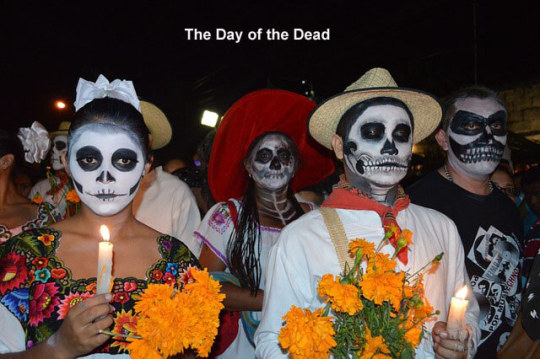
Ancestor worship is a tradition with roots in diverse cultures across the globe, transcending time and geographical boundaries. This practice involves honoring or venerating deceased family members, believing they possess a continued existence and can influence the living. Veneration simply means showing profound respect, reverence, or glorifying an individual. It's also a way of remembering the dead and communicating with their spirits in the afterlife. The venerated dead also act as intermediaries between the gods and the living. This blog post delves into the history, significance, and various practices of ancestor worship, illustrating its enduring relevance in contemporary societies.
The Roots of Ancestor Worship
It is thought that the emergence of venerating the dead occurred somewhere during the Upper Paleolithic era as society transitioned into a more complex hunter-gatherer system. The existence of burial sites with bountiful offerings is perhaps one of the obvious indicators in confirming that veneration of the dead did indeed exist then. Evidence of ancestor worship has been found in ancient civilizations like China, Egypt, Greece, and among indigenous cultures worldwide. In China, the practice is deeply embedded in Confucian philosophy, which emphasizes filial piety--a respect for one's parents, elders, and ancestors. Ancient Egyptians believed in the afterlife and constructed elaborate tombs for their pharaohs, whom they revered as gods. Similarly, the Greeks honored their deceased with rituals and offerings, believing that the dead could intervene in the world of the living.
Ways to Venerate the Dead
There are many ways people venerate of the dead. Shrines are a common means of honoring saints, ancestors, and holy figures. They can be set up in public, in places of worship, at tombs, or in private houses as a designated space for veneration and remembrance. Another means of veneration is making offerings. In pharaonic times, objects like statues or stelas were offered to the dead with texts asking for assistance or blessings. Foods and gifts are common offerings in both ancient and modern traditions. Another form of veneration entails the living speaking directly to saints, ancestors, or divinities through prayers or letters, and asking for intercession with the gods.
Key Historical Practices
China: Ancestor worship in China involves rituals such as cleaning ancestors' graves, offering food, and burning incense during festivals like Qingming and the Ghost Festival.
Egypt: Egyptians practiced mummification to preserve bodies for the afterlife, accompanied by grave goods intended to support the deceased in the next world.
Greece: The Greeks performed libations and sacrifices at the graves of their ancestors, believing in their power to bless or curse the living.
The Cultural Significance of Ancestor Worship
Ancestor worship serves multiple functions within a culture. It reinforces familial bonds, instills a sense of identity, and provides moral guidance. The practice acts as a bridge, connecting individuals with their heritage and ensuring that the memories and values of the deceased are passed down through generations.
Reinforcing Family Bonds
Ancestor worship fosters a sense of unity and continuity within families. By honoring their forebears, people acknowledge their roots and express gratitude for the sacrifices made by previous generations. This collective memory helps strengthen familial ties and promotes a sense of belonging.
Instilling Identity and Heritage
Through ancestor worship, individuals connect with their cultural heritage. This connection is crucial in maintaining cultural traditions and practices, especially in a rapidly globalizing world. Ancestor worship reminds people of their origins and the values upheld by their forebears.
Providing Moral Guidance
Many cultures believe that ancestors play a role in guiding the moral conduct of the living. By venerating their ancestors, individuals seek blessings, protection, and guidance. This belief in the moral oversight of ancestors can influence behavior and societal norms.
Modern Practices of Ancestor Worship
Despite modernization and the influence of technology, ancestor worship remains prevalent in many societies. While the rituals may have evolved, the core principles of reverence and connection to the past persist.
Practices in Different Cultures
Asia: In Japan, the Obon festival involves cleaning graves and offering food to ancestors' spirits. In Korea, Chuseok is a harvest festival where families honor their ancestors with feasts and ancestral rites.
Africa: In many African cultures, ancestor worship is integrated into daily life. Libations, offerings, and prayers to ancestors are common practices, reflecting a belief in the active involvement of the deceased in the lives of the living.
Latin America: The Day of the Dead (Día de los Muertos) in Mexico is a vibrant celebration where families create altars, known as ofrendas, adorned with photographs, food, and personal items to honor and welcome the spirits of the deceased.
Adapting to Contemporary Life
Modernity has influenced how ancestor worship is practiced, with many people adapting traditional rituals to fit their urban lifestyles. For instance, digital memorials and online ancestral databases have emerged, allowing individuals to honor their ancestors virtually. Despite these changes, the essence of ancestor worship--honoring and remembering the dead—remains unchanged.
The Psychological and Social Benefits of Ancestor Worship
Ancestor worship offers numerous psychological and social benefits, contributing to individual and communal well-being.
Psychological Comfort
Honoring ancestors provides a sense of continuity and comfort, particularly in times of loss or hardship. The belief that ancestors are watching over and protecting their descendants can be a source of solace and strength.
Social Cohesion
Ancestor worship promotes social cohesion by fostering a shared sense of history and identity. Community rituals and ceremonies bring people together, reinforcing social bonds and collective memory.
Ethical and Moral Framework
The reverence for ancestors instills a respect for tradition and continuity. This respect can translate into a broader appreciation for ethical and moral values upheld by previous generations, guiding behavior in the present.
The Future of Ancestor Worship
As societies evolve, so too will the practices of ancestor worship. The core values of respect, gratitude, and remembrance are likely to endure, even as the methods of veneration change. The integration of technology and new forms of communication will continue to shape how people honor their ancestors, ensuring that this ancient practice remains relevant in the modern world.
Emerging Trends
Digital Memorials: Websites and apps dedicated to creating virtual memorials for ancestors are becoming increasingly popular, allowing for global participation in ancestor worship.
Environmental Considerations: As environmental awareness grows, some traditional practices, such as burning incense or paper offerings, are being reconsidered and modified to reduce ecological impact.
The Enduring Relevance
Ancestor worship's ability to adapt while maintaining its core principles is a testament to its enduring relevance. It serves as a reminder of the importance of honoring one's roots and the timeless human need to connect with the past.
In conclusion, ancestor worship is a profound and enduring tradition that transcends cultural boundaries. It reinforces family bonds, instills a sense of identity, and provides moral guidance. As societies continue to evolve, the practice of ancestor worship will adapt, but its essence will remain unchanged, ensuring that the memories and values of the deceased are preserved for future generations.
10 notes
·
View notes